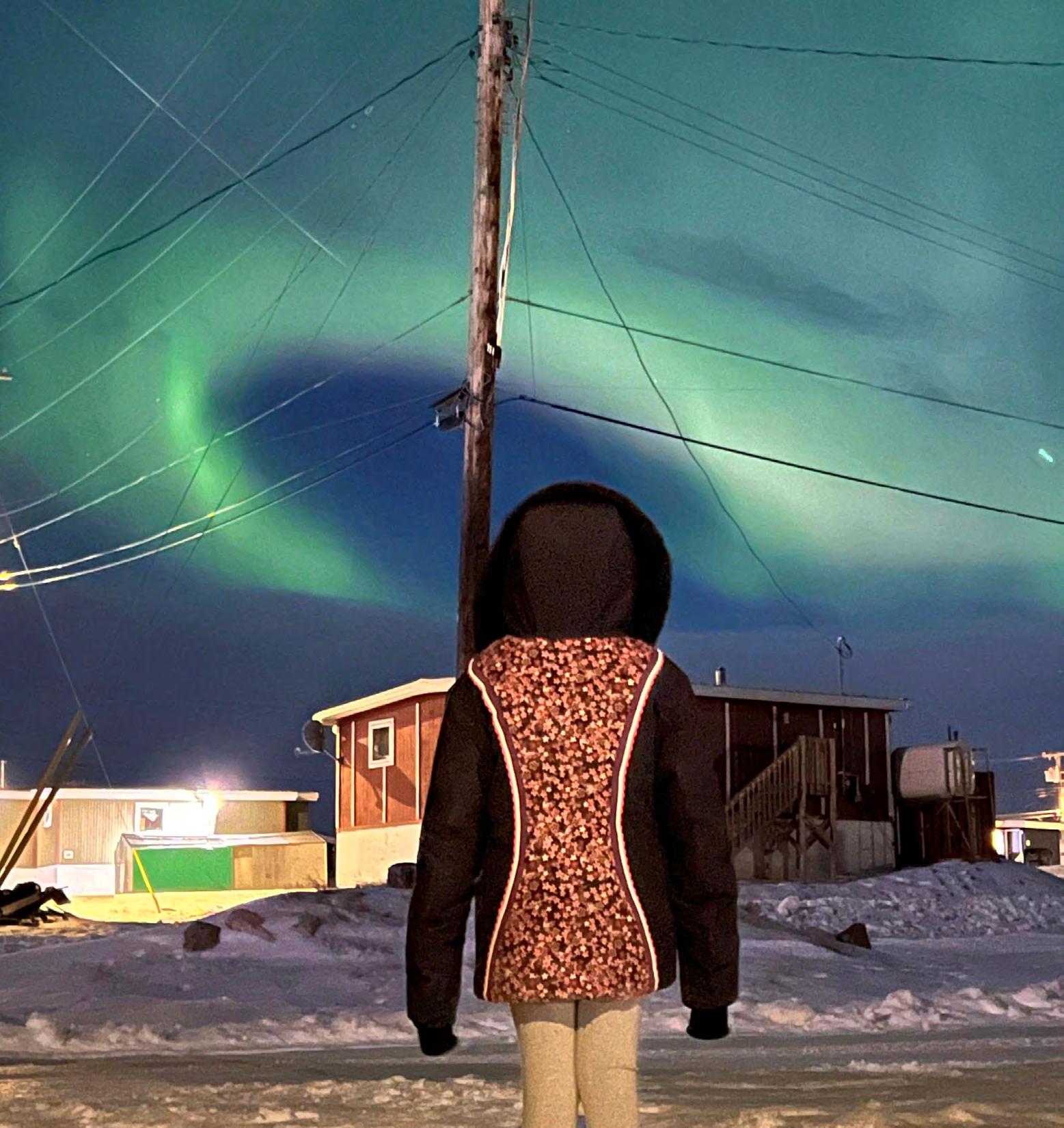



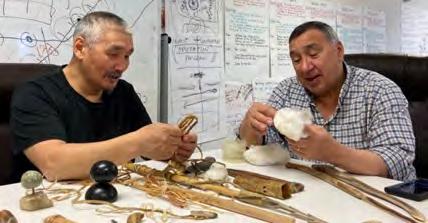
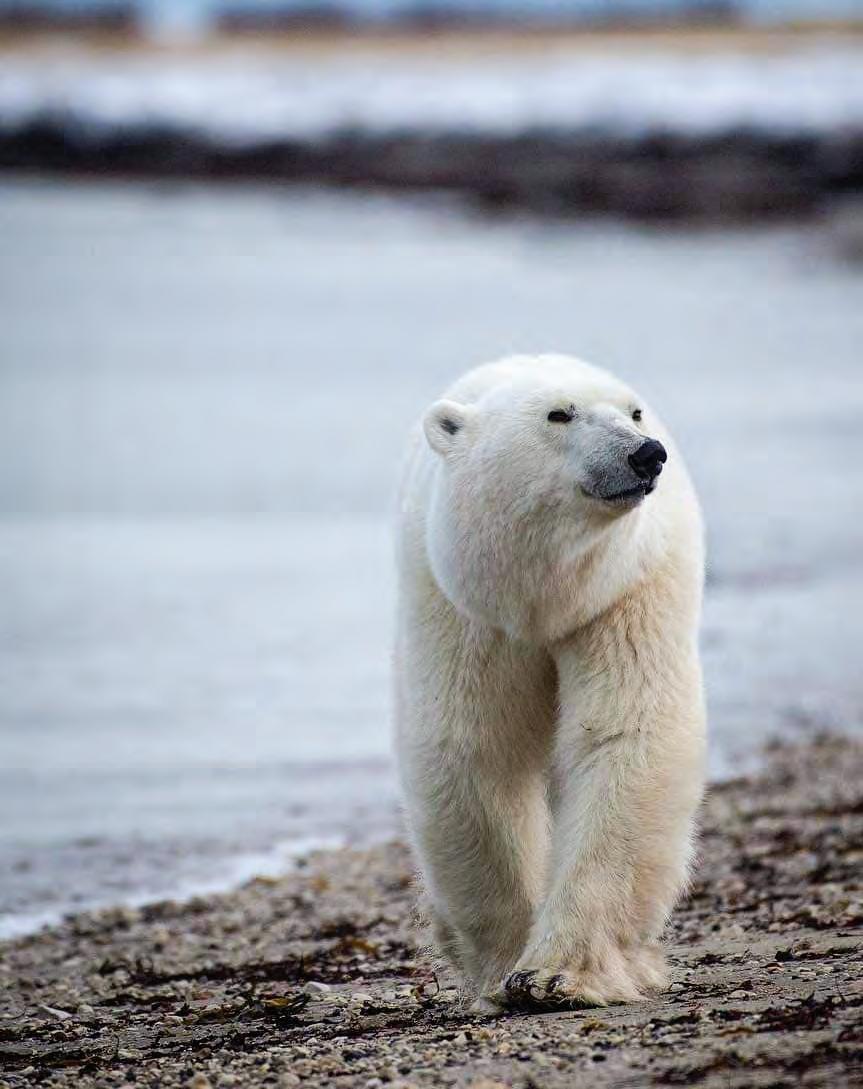

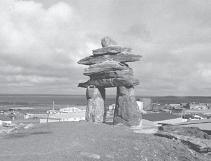











As we embark on National Non-Smoking Week, Jan. 15-21, Jenn Corcoran, a clerk/ interpreter at the Kimmirut health centre, knows the taste of success.
She gave up cigarettes six months ago now, for financial reasons.
“What pushed me to stop was mostly the price but after having stopped smoking, it’s made such a big difference in such a short time,” says Corcoran.
“I started smoking under the age of 15. I personally am a very active person and smoking took that from me at such a young age,” said Corcoran. “I find cigarettes and smoking way too accessible for youth under the age of 19 in Nunavut.”
For those who are hooked on nicotine, Corcoran has some advice.
“I would tell someone that wants to quit smoking that cravings only last a few minutes and that you’re stronger than your cravings,” advises Corcoran.
According to Statistics Canada, the prevalence of smoking among Inuit in Canada remains high, particularly in Nunavut, where lung cancer remains the most common form of the disease.
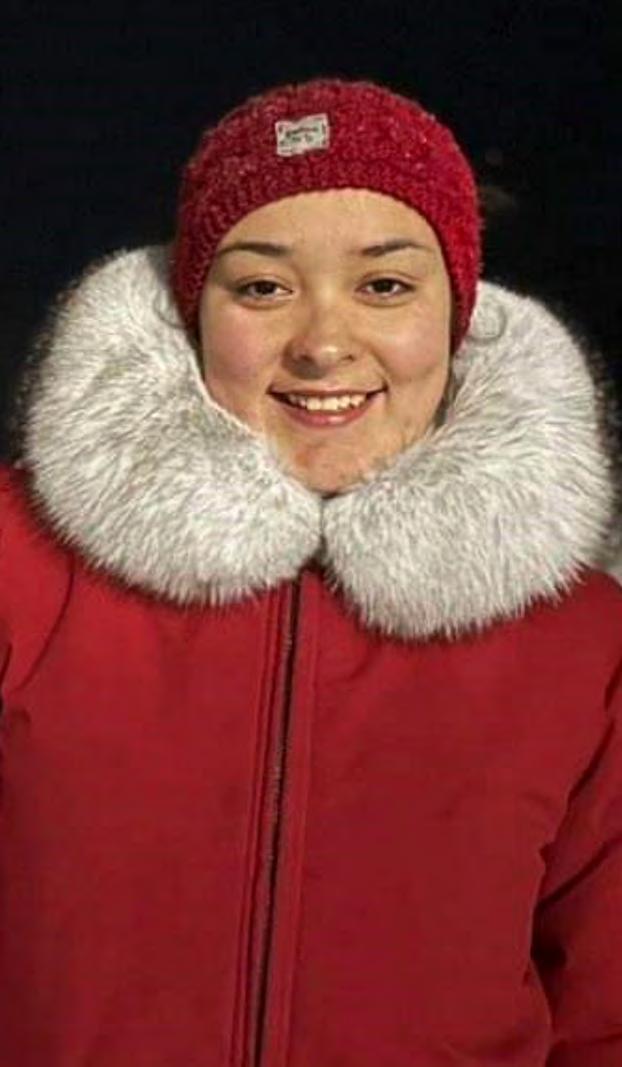


However, tobacco use is trending down overall throughout Inuit Nunangat — between 1991 and 2012 daily smoking declined from 64 to 52 per cent.
Most of this change took place after 2001 with rates still at 61 per cent that same year.
Inuit between the ages of 45 and 54 saw the least change over the course of this period while the greatest decreases came from the 55 to 64 and 65 and older age categories.
In the chief public health officer’s 2019-2020 Tobacco Control and Smoke-Free Places Act annual report, tobacco use rates remain high with a territory-wide smoking rate for people aged 12 and older at 74 per cent, with some communities reaching as high as 84 per cent. That’s several-fold higher than the national provincial rate of 16 per cent.
According to the report, smoking tobacco increases the risk of developing tuberculosis at a rate 3.5 times higher — it’s an affliction that Nunavut is still dealing with in some communities.

Jenn Corcoran quit smoking six months ago and it’s ‘made such a big difference in such a short time’The prevalence of smoking among Inuit in Canada remains high, particularly in Nunavut, where lung cancer remains the most common form of the disease, according to Statistics Canada. File photo “I started smoking under the age of 15. I personally am a very active person and smoking took that from me at such a young age,” says Kimmirut’s Jenn Corcoran. Photo courtesy of Jenn Corcoran Felix Charron-Leclerc and Trevor Wright Local Journalism Initiative

Advocates on both sides of the vaping debate say the federal government must do more to enforce penalties for selling vapes to kids after a review concluded no changes to the legislation were warranted.
The Tobacco and Vaping Products Act aims to walk the narrow line between giving people who smoke a safer alternative to combustible tobacco products and protecting youth and people who don’t already smoke from taking up vaping.
The act, which came into force in 2018, legalized the sale of vapes — or e-cigarettes — with or without nicotine. They are now found in specialty vape shops, convenience stores, gas stations and online retailers across the country.
Health Canada recently decided amendments to the law were not necessary after looking at feedback from provinces and territories, NGOs, members of the vaping industry and the public.
Its review said the government can use regulations to tailor industry rules instead, such as a proposed regulation to put limits on the sales of flavoured products.
But enforcement tools for rule-breakers may be limited beyond issuing warnings, the review said. It recommended that Ottawa explore other options.
“Given the evidence of repeated infractions and the limitations of warning letters, the development of additional tools that could respond to repeated non-compliance with a progressive enforcement approach could be explored,” Health Canada said in the report, which was tabled in Parliament in December.
Online sales to minors have proven particularly difficult to police because the regulations around age verification “may not be sufficiently responsive, the report said.
A 2021 Health Canada review of vaping and tobacco activities had come to a similar conclusion, after finding that specialty vaping stores were particularly prone to rule-breaking.
The act already includes fines and penalties for offences but they haven’t been leveraged, said Cynthia Callard, the executive director of Physicians for a Smoke-Free Canada.
“They gave themselves the powers when they passed the law in 2018,” Callard said in an interview. “Now they’re saying, ‘Well, we have to look at something else,’ without really detailing why they’re reluctant to use the powers they have.”
Health Canada’s report shows the department inspected more than 3,000 specialty vape, gas and convenience stores in 2019, and seized more than 80,000 units of non-compliant vaping products.
During the pandemic, Health Canada made inspections virtual and focused on the promotion of vaping and nicotine products. It issued warning letters to 53 per cent of the 304 retailers it inspected because of illegal social media posts.
In a statement on Jan. 6, a Health Canada spokesperson said that the department “has a compliance and enforcement program in place,” citing the inspections. “All tobacco
and vaping product retailers are responsible for knowing and complying with the requirements” under the law, the statement said.
“Health Canada enforces the legislative and regulatory requirements and, where necessary, will take compliance and enforcement action, including warning letters, stop sales, product seizures and criminal investigations.”
Still, the review made no mention of laying criminal charges under the act, which come with hefty fines and even jail time for offenders. Limited research Maria Papaioannoy, a spokesperson for Rights4Vapers, agreed that it would be helpful if Health Canada focused on enforcement, particularly when it comes to selling vapes to minors.
“We think that responsible vape shop owners do not sell to minors. We feel that responsible convenience store owners do not sell to minors,” said Papaioannoy, whose group advo-

cates for people who have used vaping to quit smoking cigarettes. “It is the black market.”
There’s not much research on the long-term health effects of inhaling e-cigarettes and the potential consequences of second-hand exposure, the government has said, but Health Canada does tout vaping as a safer alternative to smoking combustible tobacco products.

Papaioannoy said she was heartened to see the department admit in the review that it hasn’t done a good job encouraging people who smoke to switch to vaping.
Data from the government’s 2021 tobacco and nicotine survey found that about five per cent of Canadians over the age of 20 used vaping products, and the majority were people who smoke or used to smoke.
Among those people, about half said they were vaping in an effort to quit or reduce how much they smoked.
Youth vaping took off after the legalization of e-cigarettes but appeared to level off in 2021, with about 13 per cent of teenagers aged 15 to 19 vaping at least once in the past 30 days, according to the survey.
The December review is the first to evaluate the impact of the federal vaping legislation, though it did not address changes the bill also made to the regulation of tobacco products.
Health Canada is aiming to review other aspects of the law in two years.
The report was supposed to be tabled by last May according to timelines laid out in the legislation, Callard said.
Physicians for a Smoke-Free Canada sought a Federal Court order in November to compel the government to deliver the review, but the government published it before the matter went ahead. Ottawa has not responded to the notice of motion.
Callard said she doesn’t want to spend resources pushing the issue in court, but she is interpreting the lax approach to the timeline as a reflection of the government’s enforcement of the rules in general.
“They themselves are not taking the law seriously,” she said.

Health and Elders facilities in Iqaluit have introduced a temporary no-visitor policy effective Jan. 5 in light of a “surge” of Covid-19 cases in the Qikiqtaaluk region following the holidays.



Masks are required for all Iqaluit Health Services employees, clients and visiting escorts.
The following clients are permitted one escort to health facilities:
-minors
-obstetrical clients during active labour -palliative care clients
-clients who need support or interpretation, such as Elders
Although no other health measures outside of the ones adopted at Elders and health facilities are being considered at this time, authorities will have react based on circumstances that arise, according to Nunavut’s chief public health officer.
“We might have instances where we will have to declare localized public health emergencies if outbreaks put too much strain on the health system and public health measures are required,” said Dr. Sean Wachtel.
Factors such as the vaccine’s effectiveness against new variants of Covid-19 will also be taken into consideration, he added.
“We do not provide exact percentages of each variant and sub-variant. But of cases reported, most are Omicron, its variants and sub-variants,” said Wachtel.
This surge in Covid-19 cases is measured by the Department of Health through a number of factors, such as PCR testing, point-of-care testing by community health centres, as well as rapid antigen tests reported through health facilities and the Covid-19 hotline.
Between Nov. 26 and Dec. 17, three people were either medevaced or hospitalized due to the virus.
With multiple health centres expected to close in Nunavut, the Department of Health is urging people to take precautions to protect themselves against Covid-19.
These include getting vaccinated, self-isolating when sick, washing your hands regularly, wearing a mask in health/ Elder facilities and physical distancing.
If you are worried about Covid-19, test positive and need help, contact the Covid19 hotline from Monday to Friday, 10 a.m. to 8 p.m. EST at 1-888-975-8601.
Kinngait resident Leonie Mathewsie was looking out of her window when she saw the unthinkable happen on Dec. 3. “I saw a dog crawling, surrounded by other dogs. They all ganged up on the poor dog and ate him,” says Mathewsie.
Stray dogs in Kinngait have become such a problem, the authorities have difficulty controlling the situation.
“They’ve been chasing the cop truck too, there’s about five of them together,” Mathewsie said of the roving canines.
Temela Pitsiulak, a fire department captain in Kinngait, said the community’s police force has no control over the situation.
“We have no bylaw officers to catch the dogs and RCMP won’t do anything about dogs when you need them. The dogs always get reported to the RCMP and they can’t do anything about it,” Pitsiulak said.
The firefighter fears the situation is only getting worse, as the population of strays in the community keeps increasing.
“There are so many stray dogs and most of the dogs in town don’t even have any owners,” he said. “They are born strays and grew up strays.”
Pitsiulak told Nunavut News it was not the first time dogs have turned cannibalistic in the community.

“We have so many stray dogs in town, we’ve had them for so many years now too. A lot of these dogs are killing other dogs and they almost attacked a person last night. The same dogs
who killed a dog just hours later almost attacked an adult. We need help before the dogs kill a person. People of Kinngait can’t go out without having fear of dogs,” Pitsiulak stated.
He’s not the only local resident getting worried about the strays. Pitsiulak said that there was recently an Elder on the local radio asking for help to get rid of the dogs in Kinngait.
Mayor Timoon Toonoo said he has not noticed aggressive dogs in the community. Such problem would fall under the responsibility of a bylaw officer, a position the community is struggling to fill.
“I think this is a problem of the past, but if people are saying there is aggressive dogs in the community, bylaw officers would have to take care of the situation. We put the SAO (senior administrative officer) position up but nobody is applying. We can’t find anybody,” said Toonoo.
On Jan. 9, the Qikiqtani Inuit Association (QIA) announced its final distribution plan for food vouchers in the region.
Inuit families living in one of the 13 Qikiqtaaluk communities are eligible to receive a one-time $500 voucher for local grocery stores.
Inuit in the region will need to either fill out an online application, call or email the QIA with household information such as their building number and contact information. If you do not have a permanent address, you can contact your
local community liaison officer to help arrange delivery.
Households with multiple family units are eligible for more than one voucher. They will, however, have to fill out the online form or contact their community liaison officer.
In Iqaluit, residents will have the choice of voucher between Arctic Ventures, NorthMart, DJ Specialties and Baffin Canners. In other communities, the vouchers will be split between Arctic Cooperatives and the North West Company, with the exception of communities with only one vendor.
The deadline to apply is Jan. 27. Distribution of the vouchers will take place starting Jan. 30.
Funding for this came initiative from the federal Indigenous Community Support Fund as part of QIA’s Covid-19 response plan, which totalled $3.7 million as of October 2022.
Iqaluit RCMP have arrested a 33-year-old man for two counts of robbery, two counts of wearing a disguise with intent to commit an offence and possession of property obtained by crime.
The incidents both took place on Monday, Jan. 9. The Valupharm Pharmacy and the CIBC bank each reported a robbery had taken place.
The accused is scheduled to appear in the Nunavut Court of Justice on Jan. 24.
No other details were revealed by the RCMP at the time.
‘We need help before the dogs kill a person,’ says fire captain
A Nunavut judge has acquitted a prosecutor and an RCMP officer of criminal contempt but says their joint actions in the arrest of a man outside a courtroom were a “direct and public insult to the integrity of the Nunavut Court of Justice.”

In a written decision, Justice Paul Bychok says Cpl. Andrew Kerstens and prosecutor Emma Baasch were “reckless” and their actions in the arrest of Robert Campbell inside the courthouse “reveal a stunning lack of judgment,” but not to the extent required for a criminal conviction.
Kerstens arrested Campbell in Iqaluit’s courthouse and took him into police custody on July 13. Campbell had been set to stand trial that morning, along with two other co-accused, on a charge of assaulting a correctional officer.
The Public Prosecution Service of Canada states Campbell was arrested after it was alleged he had interfered with a witness set to testify at the trial.
Bychok wrote in his decision that when Campbell did not show up for his trial, Baasch, in requesting an adjournment, stated in passing that he was in custody. The judge said it was only when he questioned Campbell’s lawyer that he learned the man had been arrested outside the courtroom that morning.
After returning Campbell to court more than an hour later, Kerstens told the judge he felt it had been in the public interest to arrest the man.
Bychok wrote that he did not learn about the prosecutor’s involvement in the arrest until a contempt hearing for the officer in August. Kerstens’ lawyer said the prosecutor had
discussed the matter with the officer and they mutually agreed Campbell should be charged and arrested when he arrived at the courthouse.
Bychok said the actions of Baasch and Kerstens violated Campbell’s right to be present at his trial and were “a flagrant and public interference with, and violation of, the court’s active jurisdiction over him.”
“Each of you gave no more thought or reflection to your actions, their implication, and ramifications, than you would have had you considered having Mr. Campbell arrested in NorthMart or inside the Legion,” he wrote.
The judge added that the prosecutor, on the day of the trial, failed to give the court a “candid and full accounting and explanation” for her actions, or justification for Campbell’s arrest and trial adjournment.
“I am disappointed that nowhere in your affidavit or in your lawyer’s pleadings do you recognize that you failed in your ethical duties to the court,” he wrote.
In a statement, the Public Prosecution Service of Canada said it fully supports Baasch and “is of the view that the prosecutor acted ethically at all times.”
The RCMP did not immediately respond to a request for comment.
Court records show Campbell did stand trial on the assault charge but Bychok has not yet issued a verdict.
—By The Canadian Press. This story was produced with the financial assistance of the Meta and Canadian Press News Fellowship.
The federal government and the Indigenous Leadership Initiative launched the First Nations National Guardians Network at the United Nations Convention on Biological Diversity Conference of the Parties in Montreal on Dec. 9.
Over 170 Indigenous guardian programs already exist but only became a national network with the announcement of the new organization. Environment and Climate Change Canada had previously committed $60 million to the guardian initiatives, increasing the funding to $100 million in 2021.
Up to 1,000 Indigenous guardians will be funded to “monitor ecological health, maintain cultural sites, and protect sensitive areas and species,” according to the federal announcement. Guardians will essentially function as park and game wardens while serving as environmental monitors, both informing and enforcing community policy on protected lands.
“The support, growth and development of the Indigenous Guardians initiative for the past several years has been a key pillar of the Government of Canada’s conservation ambitions,” Environment Minister Steven Guilbeault said in a statement. “The new First Nations Guardians Network will allow for further autonomy for First Nations in managing their traditional land and water.”
Ottawa committed $5.8 million directly to the network, which will administer remaining funds from the initial $100 million funding.
Guilbeault said it was the first governance model of its kind, based on a nation-to-nation model for land stewardship.
“Canada can only meet its climate change and biodiversity targets
through Indigenous conservation,” Guilbeault added.
United Nations data shows that Indigenous peoples, despite making up only 6% of the world’s population, help protect 80 per cent of the world’s biodiversity.
Valerie Courtois, ILI Director, said that guardians were the “moccasins and mukluks on the ground.” When she started working with guardians, there were only 30 programs, but now there were 760 proposals in British
Columbia alone.
Erebus ᐊᒻᒪ Terror-ᒥ.
“Indigenous peoples are proven stewards of biodiversity, and Indigenous Guardians are on the ground caring for land and water we all depend on,” Courtois said. “With these investments, Canada is offering a model for respecting and supporting the Indigenous-led stewardship — a model we hope spreads around the world.”
In 2014, Courtois helped develop a Guardian proposal for $500 mil-
lion in funding, based on the average program with a budget of $1 million.
Courtois said that everyone supported it — the then-governing Conservatives saw it as a job-creation program, Liberals viewed it as reconciliation, while the Greens considered it an environmental initiative.
They managed to secure $25 million in seed funding. It was important for Courtois that all the funding decisions went through this network, and “not through Gatineau,” where
ministry headquarters are located.
By contrast, she pointed to Environment Canada having one environmental officer for Labrador, the size of Texas, based in Goose Bay and without a travel budget. In comparison, the Indigenous Guardian program is a proactive approach to environmental monitoring.
The next challenge for the network is to establish a profession, which will require a curriculum that responds to Indigenous laws.
“What gives me hope isn’t what’s happening within those walls, but what’s happening on the ground,” she added. “I hope it’s an example for the rest of the world.”
Speaking at the same event, Grand Chief Mandy Gull-Masty said that the Cree Nation was already part of the Guardians Network, with four Eeyou Istchee Land Keepers.
She said the CNG had worked with the Indigenous Leadership Initiative, which helped with training, organization, and how to adapt it to Cree realities.
At a recent council board meeting, a resolution was passed to develop a training program with the Centre d’etudes collegiales a Chibougamau. Gull-Masty said the federal government plans to create an additional 19 Land Keeper positions and is pressuring Quebec to fund 50 game warden positions.
“One of my goals is to see wildlife protection officers who are under the authority of the Cree Nation,” Gull-Masty told the Nation. These would combine the roles of Land Keepers, park wardens and game wardens, based on a plan to create several parks throughout Eeyou Istchee.
 Benjamin Powless, Local Journalism Initiative reporter
Benjamin Powless, Local Journalism Initiative reporter









the world juniors in person.
When Dylan Guenther scored his second goal of the game at 6:22 of overtime to give Canada a 3-2 victory over Czechia to claim the International Ice Hockey Federation’s (IIHF) World Junior Championship, the roof nearly blew off the Scotiabank Centre in Halifax, N.S., on the evening of Jan. 5 — and Joseph Jr. Kaludjak and his family from Rankin Inlet were right in the middle of it.


Kaludjak, 47, said he’s been a big fan of junior hockey since he was just 10 years old and he’d always dreamed of one day attending
He said when he, his wife, Rachel, and their two children, Loli and Leo, entered their names in the IIHF’s priority draw — a lottery — for the chance to buy tournament tickets months before the event began — and Loli’s name was drawn — they just knew they had to go.
“We had been trying for awhile now and we finally got lucky with those lottery tickets,” said Kaludjak.
“This was a once-in-a-lifetime opportunity for us. We went to most of the games and had a total blast.
“We got four gold medal tickets and all got to go to the big game.”
Kaludjak said he found Halifax to be a nice city with friendly people.
He said inside the Scotiabank Centre was “crazy loud” during games Team Canada played.

“I got caught up in all the excitement, cheering all out.
“It’s way better to see the games in-person than on TV. You can feel the whole crowd when everyone’s cheering.”
Kaludjak is a Toronto Maple Leafs fan when it comes to NHL hockey, and was maybe a bit disappointed that the Leafs didn’t have a single prospect in this year’s championship.
But, his whole family was cheering on Cana-
da’s Connor Bedard and Kaludjak said he was just incredible to watch during the tourney.
“He’s something else, man.
“This was an experience I’ll never forget. I watched him (Bedard) score that overtime goal live (against Slovakia in the quarterfinals).
“I don’t even remember when I got to the glass when Canada scored (the overtime winner in the championship game), but I know I was the first to get there when Canada scored. And I was wearing a goalie mask too.
“It was unreal and so much fun. This has been our dream our whole lives as big hockey fans. If I ever have another chance to go, I will for sure.”
Haters gonna hate.
And those who don’t like sports just cannot relate to the sense of patriotic pride that rises up with the euphoria when a group of young hockey players capture the International Ice Hockey Federation’s (IIHF) World Junior Championship for Canada.

The nation literally shuddered with joy in living rooms and dens from Whitehorse to Gander, Nfld., and all points in between, when Dylan Guenther notched the twine in overtime to give Canada a 3-2 win over Czechia to become just the fifth team in the event’s history to win gold after losing its first game.
And, nothing could have been more perfect this past Thursday, Jan. 5, when, following the game, young rising superstar Connor Bedard ended his interview with “I love this country. This city right here (Halifax) has been unbelievable.”
More than 14 million Canadians watched the final game and that was just the tip of the iceberg as to the amount of love showed to the IIHF’s premiere tournament during the 11 days in Atlantic Canada at Moncton, N.B., and Halifax, N.S.
The average number of television viewers for Team Canada games during the preliminary round was 1,501,900, with the Canada vs. Sweden game being the number one English sports broadcast in Canada on New Year’s Eve.
A total of 254 volunteers gave of their time to staff seven different committees in Halifax and Moncton. The volunteers worked 1,785 shifts, totaling more than 10,000 hours, during pre-tournament and the world juniors itself.
Social media posts sent across all Hockey Canada platforms (Twitter, Facebook, Instagram) from Dec. 19, when pre-tournament play began, through Jan. 4 earned 48,871,480 impressions and 2,560,649 engagements.
Attendance for the relegation-round game between Latvia and Austria in Halifax on Jan. 2 was an impressive 4,880 fans, making it one of the highest-attended relegation games in world juniors history.
media and other groups.

There were more than 5,000 hotel nights booked in Halifax and Moncton by teams, Hockey Canada staff, IIHF staff and
There were more than 11,000 in-venue transactions in Halifax and Moncton, with an average transaction value of $91.87.

The amount of money generated from world juniors 50/50 ticket sales across all six participating provinces (British Columbia, Alberta, Saskatchewan, Ontario, New Brunswick and Nova Scotia) through Jan. 4 was a stagger-
ing $2.1 million.

All more than impressive numbers, no doubt, but the most important numbers to the millions of Canadians waving flags and draped from head to toe in Team Canada paraphernalia were the 3-2 final score for the home nation and Canada claiming its 20th gold medal in the 46 world juniors that have been played.
The IIHF’s world juniors has become one of the most significant events on the hockey schedule for tens of millions of Canadians every year, with, arguably, fans in many smaller cities that are home to junior teams look-
ing at the tourney as the premier event of the year.
One thing, in this hockey fan’s opinion, is that Halifax and Moncton proved this year beyond much doubt that those same smaller cities that are home to junior clubs, without the presence of an NHL team, are the perfect locales for when Canada hosts future world juniors.
Until then, we get to revel in our country’s 20th championship and exercise our bragging rights until the world gathers in Sweden for the 2024 event.
I love this country!

 By Darrell Greer, Northern News Services
By Darrell Greer, Northern News Services
Folks in Rankin Inlet were treated to another stellar fireworks display to ring in the new year this past Dec. 31, thanks to the efforts of the Rankin Inlet Fire Department.


The event was the sixth fireworks display overseen by Fire Chief Mark Wyatt, who has been with the Rankin department for more than seven years and plans to continue to serve the community for the foreseeable future.
The community was doing family-type fireworks when Wyatt got involved and upgraded the annual show to a commercial display.
He said he had been involved with firework displays for 10 years in the south, and brought a trainer to Rankin Inlet who originally certified three members of the fire department and two from the hamlet’s recreation department.
He said, this year, recreation wasn’t able to take part and the show became the sole responsibility of the fire department, with he, deputy fire chief George Aksadjuak and two others taking care of the display.
“I don’t know if this year was our best show ever because we had some issues with some of the cakes, but we were running four-inch mortars over threeinch mortars so it looked impressive,” said Wyatt.
“And the weather was beautiful this year at -14 C with no wind.

“We’ve had some years down there (Williamson Lake) where it was -35 C, and it’s not nearly as much fun doing the show in those conditions.
“This year’s New Year’s Eve parade we did was also the biggest I’ve ever seen here.”
A huge and animated crowd took in this year’s fireworks display.
Wyatt said with Covid limiting the festivities for a few years, people were really happy to get out to this year’s show.
He said there was a feeling of life being back to normal in the community with a huge crowd taking in the annual display.
“We budgeted about $6,000 for the show this year and I can say that the shows we do up here are really first class compared to the rest of the country.

“The show is a source of pride for our department, which just keeps getting busier and busier every year, especially with medical calls, which are the majority of what we do.
“We responded to 846 calls in 2022. Our biggest year before that was the previous year, 2021, when we responded to 674 calls.
“Sometimes we have eight or nine calls a day – 10 on Dec. 30 – so we have a lot of dedicated, unpaid volunteers in this department.”






Canadians who don’t file their tax returns are sometimes shocked to find out how much money they’re owed by the government for years of missed benefits, says the head of a non-profit organization working to build financial literacy among low-income people.
Prosper Canada CEO Elizabeth Mulholland says her organization collaborates with other community partners to deliver financial services and literacy programs, including tax-filing programs that help Canadians who might otherwise not file their returns.
She says some people seeking out such services find that they’re owed as much as tens of thousands of dollars in benefits they haven’t collected.
That newfound cash can open the door to a conversation about money and financial planning, she said, recalling that one family was able to put a down payment on a condominium after receiving the money they were owed.
“Often, the first question is: ‘well, what am I going to do with all that money?”’ Mulholland said.
The federal government is increasingly relying on the Canada Revenue Agency to deliver income-tested benefits to individuals, including the recent top-up to the Canada Housing Benefit and the temporary doubling of the GST tax credit.
However, some vulnerable Canadians are missing out on payments because they don’t file their returns.
Taxpayers’ Ombudsperson Francois Boileau raised that issue in his latest annual report, published this week. During a news conference on Tuesday, Boileau said he’s planning to provide the CRA with recommendations on how to address the issue.
“We’re still trying to fully understand the problem and actually propose concrete solutions, so that’s why there’s no recommendations this year. But you bet there will be at another point,” he said.
Jennifer Robson, an associate professor of management at Carleton University, has been looking at the problem of non-filers in the tax system and its implications on the delivery of income-tested benefits.
10 to 12 per cent delinquent
In a paper published in 2020, Robson and co-author Saul Schwartz found that about 10 to 12 per cent of Canadians don’t file their tax returns.

In total, the researchers estimated the benefits lost to working-age non-filers was approximately $1.7 billion in 2015.
Why don’t people file their tax returns? It’s somewhat of an academic mystery, Robson said.
“We don’t yet have a good, full understanding of why people don’t file the return,” she said. “Why would people not file a return if it means they’re leaving money on the table?”
According to her paper, non-filers are more likely to be male,
young and single. And although there were non-filers across all income groups, they were most heavily concentrated in lower income brackets.
“It’s a real problem in terms of people missing out on some of those cash benefits,” Robson said.
It also has implications for the integrity of programs, she said, given that many programs use tax filings to verify eligibility.
Based on her experience working with low-income people who haven’t filed their taxes, Mulholland said there’s a whole host of reasons why, including language barriers, cognitive issues and even just a lack of awareness.
In 2015, newly elected Prime Minister Justin Trudeau’s mandate letter to the national revenue minister asked that the CRA proactively reach out to Canadians who are entitled to, but not receiving, tax benefits.
It also said the CRA should offer to do the work to complete tax returns for some Canadians, particularly those with lower incomes.
A CRA spokesperson said in an email that each year, the

agency helps more than 600,000 people with modest incomes file their taxes by supporting free tax clinics. The agency is also working with Statistics Canada to better understand the take-up of benefits.
Robson said there’s no “silver bullet” to address the issue of non-filers, but a starting point would be to have the CRA pre-complete tax returns for Canadians whose information is already with the agency.
“Think, for example, about people who are on social assistance. That’s a lot of people. The CRA knows what their income was,” Robson said.
Mulholland said she’d like to see more co-ordination across federal and provincial government departments and agencies, as well as community groups, to get to Canadians who may be missing out on benefits because they aren’t filing their taxes.

“As long as the money just lapses in Ottawa, we’re failing, and that failure has really harsh consequences for low-income people who are the intended beneficiaries of that money,” she said.
—By Nojoud Al Mallees, The Canadian Pressare more likely to be male, young and single, researcher findsThe federal government is increasingly relying on the Canada Revenue Agency to deliver income-tested benefits to individuals, including the recent top-up to the Canada Housing Benefit and the temporary doubling of the GST tax credit. However, some vulnerable Canadians are missing out on payments because they don’t file their returns. Black Press file photo

The Other Ones by Jamesie Fournier is a collection of two short stories that gives the deep darkness of Northern winters a name and a face, leaving readers with a lingering sense that there are beings out there that are just as hungry and dangerous as we can be.
Accompanied by visceral illustrations by Toma Feizo Gas, this all-ages thriller brings Fournier’s storytelling to the page.
The Other Ones collects two tales of different beings from Inuit legends that, each in their own way, are able to prey on children who disregard their parents and the traditional knowledge that keeps them safe. Combining the immersive aspects of oral storytelling with the style of a picture book, Fournier’s stories highlight the important bond between parents and children and the way that this bond can have its own kind of power to keep all of them safe.
Chilling its characters and its readers to the bone, the first story in this collection, “The Net,” follows an unnamed mother and daughter in a tense encounter with the Inuunngittut — the “Other Ones” — after which this book is named. The second story, “Before Dawn,” chronicles an encounter that Sim, an Inuk boy, has with an ijiraq, a

shape-shifting creature who lures Sim away from his home and across the tundra. Similar to the 2019 film Midsommar, Fournier’s second story warns that scary things do not always have to hide in the dark and reminds readers that just because the midnight sun is up, that does not mean that it isn’t still nighttime.





This writer-illustrator combination does creepy well. These richly described cautionary tales of children drifting too far away from home will tug at your heartstrings while also practically guaranteeing that your blood will run cold. In the same way that Fournier’s stories will haunt you even after you’ve put down The Other Ones, Gas’s illustrations will keep watching you even after you’ve turned the page on them. This effect is made even more powerful by the overall design of this book.
There was an incredible amount of care put into this project, and it shows on every page. Highly atmospheric, this book reflects the stories it holds. For example, during a sequence when someone is pulled under the ice into a freezing lake, an entire page in The Other Ones is blacked out, leaving the white writing visible in a way that is reminiscent of bubbles in dark water.
The Other Ones collects two tales of different beings from Inuit legends that, each in their own way, are able to prey on children who disregard their parents and the traditional knowledge that keeps them safe. Photo courtesy of Jamesie Fournier








